Winter doesn’t mean you have to abandon your veggie garden. There are plenty of cold-hardy vegetables that thrive even in the chilliest months. The trick is to identify which vegetables to grow in winter in your climate as well as some ideas to help your plants survive the cold. So in this article, I’ll detail 26 varieties of winter vegetables to grow, along with their survival temperatures. I’ll also cover growing tips so you can start growing winter vegetables today.
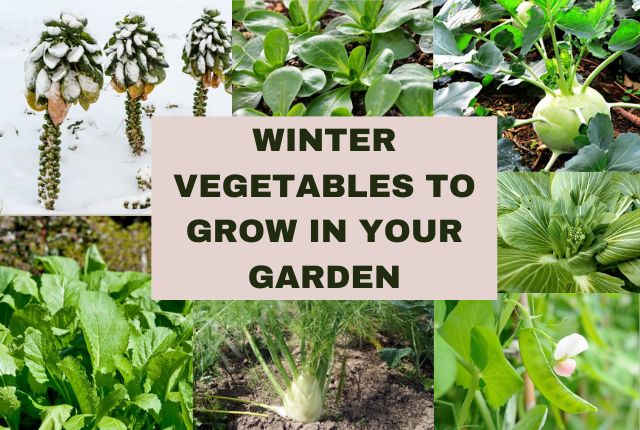
Table of Contents
- Growing A Winter Vegetable Garden
- 1. Arugula
- 2. Beets
- 3. Broccoli
- 4. Brussels Sprouts
- 5. Cabbage
- 6. Carrots
- 7. Fava Beans
- 8. Fennel
- 9. Garlic
- 10. Kale
- 11. Kohlrabi
- 12. Leeks
- 13. Lettuce
- 14. Mâche
- 15. Mustard Greens
- 16. Onions
- 17. Pak Choi
- 18. Parsnips
- 19. Radishes
- 20. Rutabagas
- 21. Scallions
- 22. Snow Peas
- 23. Sorrel
- 24. Spinach
- 25. Swiss Chard
- 26. Turnips
Growing A Winter Vegetable Garden
The key to a successful winter crop is to keep in mind that most winter veggies will need to be in the ground well before winter sets in. This will allow the plants to be mature enough to withstand the cold conditions and for you to grow a successful winter garden.
Depending on the hardy winter vegetables you would like to grow and what’s possible in your climate, some veggies will need to be in the ground by late summer while others can be planted as late as mid fall for winter crops.
For example, beets, Brussels sprouts, and broccoli should be started in late summer while lettuce, cabbage, and radishes can be planted in late fall.
You should also know that mulch is a secret weapon in winter gardening! Mulch is like a warm blanket that will cover the soil and keep it warm. Or warmer. You can use straw, dried leaves, or even cardboard to mulch your winter garden. And your plants will love you for it.
And unless you experience only mild winters, you will probably need some row covers or frost blankets for any really cold conditions. Further to this, your climate might mean you need a cold frame or greenhouse for the best winter gardening success. Some gardeners prefer to move to indoor vegetable growing with grow lights. While milder climates can get away without these additional garden helpers.
A final tip for winter gardening is to be aware that adverse winter weather conditions other than being cold can affect the growth of your winter vegetable garden, for example, extended wet weather or strong winds.
Now let’s dig in and discover how you can keep your vegetable garden growing throughout the winter months by planting the veggies that will successfully grow well into the winter and survive in your climate.
Related: 14 Root Vegetables For Winter Harvest
1. Arugula

Survival temperature for arugula is down to 22°F (-5°C).
Arugula is cold-hardy and can tolerate low temperatures well. This makes arugula an excellent choice for winter gardening in regions with cold climates.
Plant arugula in the fall for a cool season harvest. I love to succession plant arugula by sowing seeds every few weeks so I have a longer harvest of delicious peppery greens.
As a fast-growing crop, you can expect to start harvesting young arugula leaves in just 3-4 weeks after planting, depending on the variety.
You can harvest the arugula plant’s outer leaves first, allowing the inner leaves to continue growing for successive harvests. Be sure not to harvest more than 1/3 of the arugula leaves at a time to ensure the plant has enough energy to continue to grow. Come back to the plant in a week or so for a further arugula harvest.
In extremely cold climates, use row covers to protect arugula from frost.
2. Beets
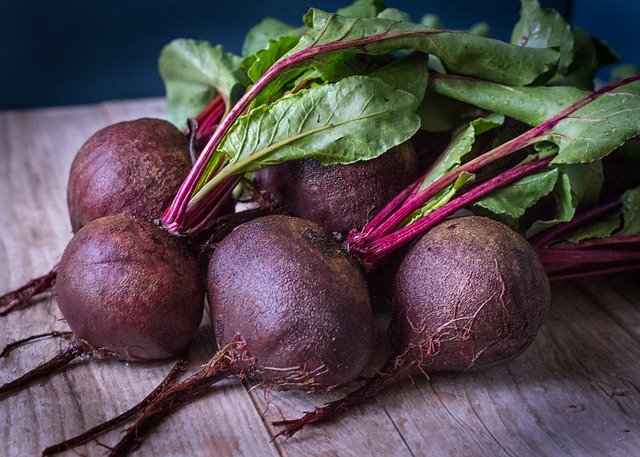
Survival temperature for beets is down to 20°F (-6°C)
Beets are quite cold-tolerant, and they can continue growing in cold weather. In fact, cold temperatures can enhance their flavor.
Some beet varieties are more cold-tolerant than others. Great options for growing beets in cold conditions include Crosby Egyptian, Lutz Green Leaf, Winter Keeper, Bull’s Blood, Touchstone Gold, and Chioggia.
Beets can be planted in late summer for a fall harvest. I’ve found very cold weather means beets stop growing and then continue growing again as the weather warms up a bit.
To protect your beets from colder temperatures and extend the growing season, you can mulch around the plants and use row covers. These methods help provide insulation and prevent frost damage to your beet plants.
3. Broccoli
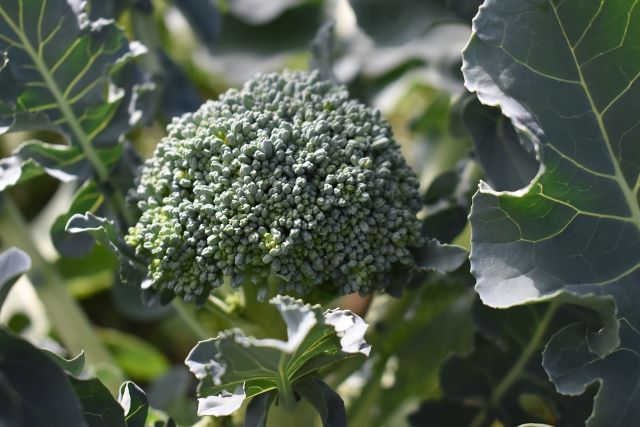
Survival temperature for broccoli is down to 20°F (-6°C).
Broccoli is fairly hardy and can tolerate cold temperatures well especially as a mature plant rather than a young seedling.
Planting broccoli in the right season for your region will help ensure its growing success in colder conditions. For a fall harvest, plant broccoli in late summer.
Proper spacing between broccoli plants is important. It allows air to circulate, reducing the risk of frost damage. Space broccoli plants 18 inches (45 cm) apart in rows.
Use mulch around the base of the broccoli plants to retain soil moisture and regulate soil temperature.
To protect your broccoli plants from extreme cold, cover them with frost blankets or row covers. This will also protect your broccoli from the many pests that love to eat broccoli!
4. Brussels Sprouts
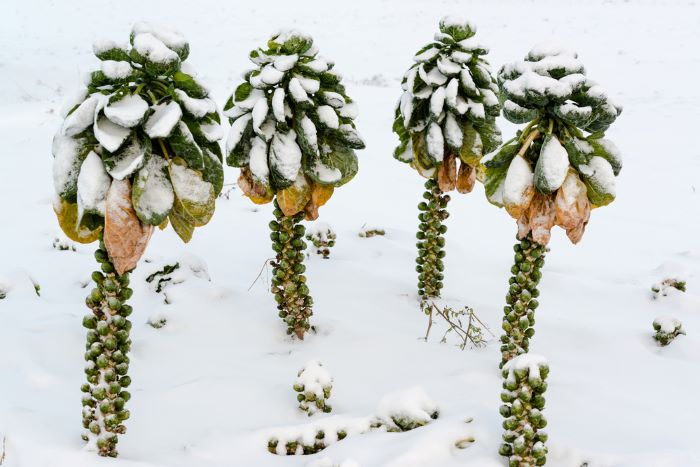
Survival temperature for Brussels sprouts is down to 20°F (-6°C).
Brussels sprouts are remarkably cold-tolerant and can withstand light frosts and some snow. In fact, light frosts can improve Brussels sprouts’ flavor by converting starches into sugars, making them sweeter.
To grow Brussels sprouts successfully in colder weather, plant them in late summer so they have time to mature before the cold sets in.
Space Brussels sprouts plants about 2 feet (60 cm) apart to allow room for growth.
Mulch around the base of the Brussels sprout plants to help regulate soil temperature and retain moisture.
Provided Brussels sprout plants are mature enough during the chilly weather, at harvest time you can even leave Brussels sprouts on the stalks after the first snowfall.
When frost is expected, covering the plants with row covers or blankets will provide extra protection against freezing. It’s especially important to protect Brussels sprouts from any hard freezes for a successful winter crop.
5. Cabbage
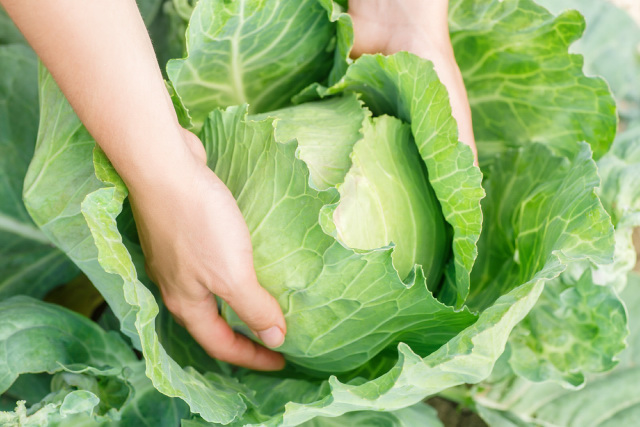
Survival temperature for cabbage is down to 20°F (-6°C).
Cabbage is considered one of the hardiest vegetables, capable of tolerating frost and cold conditions. While exact temperature tolerances vary between cabbage varieties, they can generally withstand temperatures down to around 20°F (-6°C) or even lower.
As a cool-season vegetable, plant cabbage in late summer for a fall harvest. Cabbage plants can even be overwintered in some regions with cold protection, in the form of row covers or cold frames.
For harsh winter conditions, choose cabbage varieties that are specifically bred for cold resistance, as they are more tolerant of low temperatures. Cold tolerant cabbage varieties include Late Flat Dutch, Savoy cabbage varieties such as Winter King and Perfection Drumhead, January King, Red Cabbage varieties such as Red Express, and Spring Greens.
Some cabbage varieties are specifically known as winter cabbage. They produce smaller heads with a hardier leaf. Try growing Danish Ball Head, Huron or OS Cross.
For severe frost and freezing conditions, cabbage does need protection for a successful harvest. This can include a combination of mulching around the plants and using frost covers.
6. Carrots
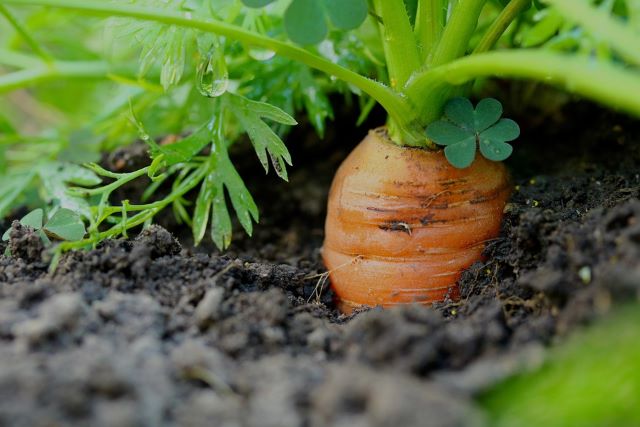
Survival temperature for carrots is down to 15°F (-9°C).
As a cool-season root vegetable, carrots are tolerant of frost and cold temperatures so are great for late fall and winter harvests.
Carrots can be planted in late summer for a fall harvest or even into early fall for a winter harvest. Make sure the soil is nice and loose for planting or you risk growing wonky deformed carrots!
Carrots can be harvested 60-80 days after planting or earlier for baby carrots.
The handy thing about carrots is you can leave them in the ground and harvest them as needed throughout the winter. So it’s like having a grocery store in your yard and you can shop whenever you like!
Use a layer of straw as insulation to prevent the soil from freezing too deeply and to make harvesting easier. In very cold climates, pull up your carrots before the ground freezes solid.
7. Fava Beans
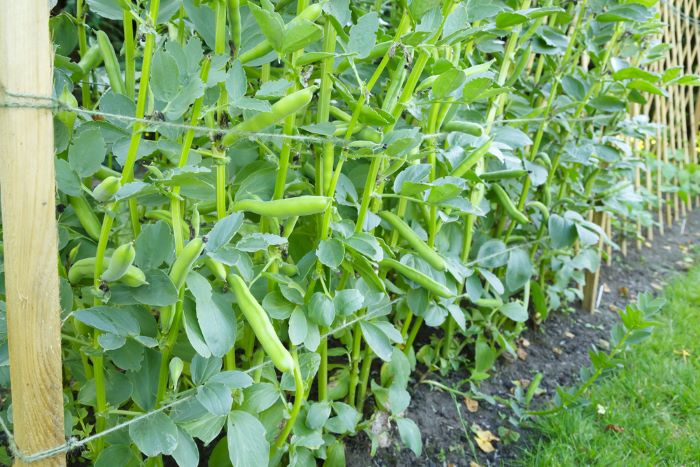
Survival temperature of fava beans is down to 15°F (-9°C).
Fava beans, also known as broad beans, are cold-tolerant and can survive temperatures as low as 15°F (-9°C).
Fava beans are typically planted in the late fall or early winter in mild climates, several weeks before the last expected frost date. They can also be planted in early spring if your region experiences only mild winters.
Young fava bean plants will need protection from the cold with row covers while more mature plants can handle light frosts. For extreme cold, use some protection as severe cold can damage the plants.
Fava beans need a longish growing time of 80-100 days after planting though this time frame will be further extended if growing them over winter due to a slow down in growth.
You can expect to be harvesting fava beans in late spring. And you’ll know they’re ready to harvest when the fava bean pods are plump and the beans inside are tender.
Fava bean plants will need support to stop them from toppling over. as they become taller. You can stake them individually. Or I use a string grid system which is created by staking the outside of your fava bean plants and then using a series of strings to criss-cross from stake to stake running through the plants. I’ve found it beneficial to plan out the stakes at planting time then as your fava beans grow you can add string supports between the plants and stakes.
8. Fennel
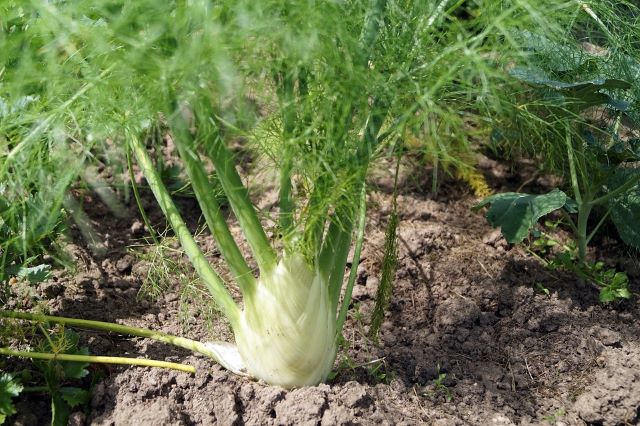
Survival temperature for fennel is down to 25°F (-4°C).
As a cold-hardy plant, fennel can be planted in late summer for harvest in the cooler months. Fennel does need protection from frost so if your region experiences frost, use row covers.
I particularly enjoy harvesting fennel leaves once the plant is big enough. They give a delicious burst of flavor to some of my favorite dishes including winter salads and heartwarming soups.
For the fennel bulb, harvest it when it reaches 3-4 inches (7.5-10 cm) in diameter which takes 90-115 days after planting.
9. Garlic
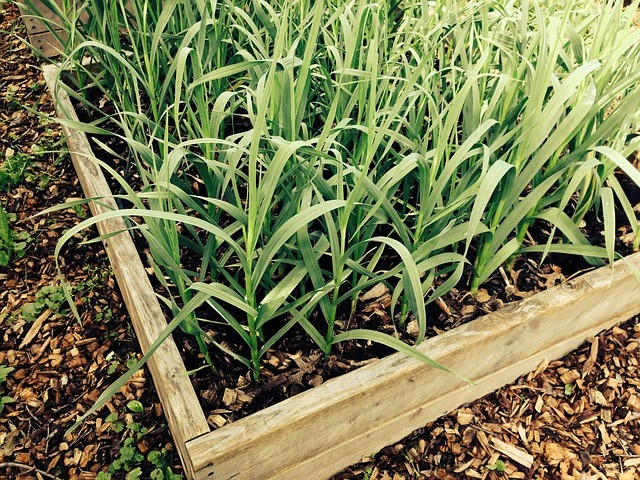
Survival temperature for garlic is down to 0°F (-18°C).
Garlic is a hardy plant that can survive temperatures well below freezing. Garlic actually requires a period of cold to form bulbs properly.
Garlic is usually planted in the fall, a few weeks before the first frost date. This allows the garlic cloves to establish roots before winter.
Plant garlic cloves about 2 inches deep and 6 inches apart in rows. Ensure the pointed end of the clove faces upward – this is a good tip to remember else your garlic just won’t grow!
Mulch will help protect garlic plants when the weather gets really cold.
And because garlic needs a long growing time of about 9 months, you can expect to be harvesting garlic by early summer or even late spring, depending on when you planted your garlic.
You will know your garlic is ready to harvest when the lower leaves turn brown and start to die off.
Once you have gently lifted the garlic bulbs from the ground, you can cure them in a dry, well-ventilated area for 2 weeks to help develop their flavor and their storage life.
10. Kale
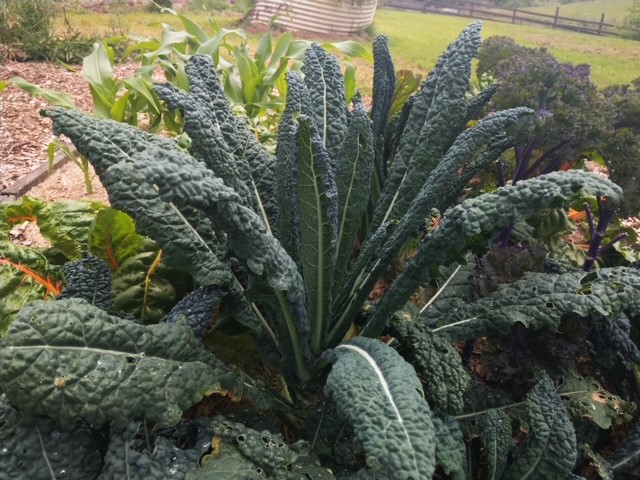
Survival temperature of kale is down to 5°F (-15°C).
As a cold-hardy vegetable, kale can withstand frost and low temperatures down to about 5°F (-15°C) and sometimes even lower, depending on the variety.
For a fall or winter harvest of kale, plant kale in late summer so it matures in cooler weather.
You can begin harvesting kale once the leaves reach a usable size, around 2 to 3 months after planting. Start with the outer leaves while allowing the inner ones to continue growing for harvesting later.
In milder climates, kale can be overwintered, and it actually becomes sweeter after a frost.
If you would like to grow kale in cooler climates, choose cold hardy kale varieties such as Siberian Kale, Dwarf Siberian Kale, Winterbor Kale, Red Russian Kale, White Russian Kale, and Lacinato Kale (also known as Dinosaur Kale).
You can further protect kale from the cold by mulching around the plants and using frost covers.
11. Kohlrabi

Survival temperature for kohlrabi is down to 20°F (-6°C).
Kohlrabi is a cold-hardy vegetable that you can plant in late summer for a fall crop.
Mulching around the plants will help protect them from cold weather. Though kohlrabi can withstand light frosts and even become sweeter after exposure to cold.
Kohlrabi is ready to harvest about 8-10 weeks after planting. You can harvest the plant when the bulb reaches 2-3 inches (5-7.5 cm) in diameter.
You don’t want to let kohlrabi get too big or it will give them a bitter flavor and make their texture tough and unpleasant to eat. Signs to look out for is a kohlrabi bulb that is firm with a smooth surface.
I harvest kohlrabi using a knife to cut the bulb just above ground level.
12. Leeks
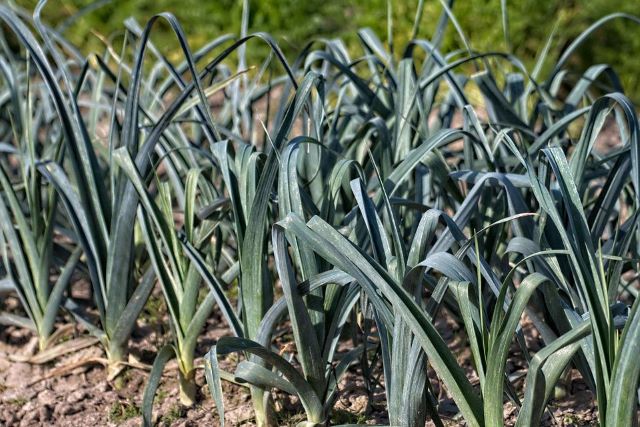
Survival temperature of leeks is down to 20°F (-6°C).
Provided leeks are in the ground by late summer, they can be kept in the ground over winter and harvested as needed.
You can start harvesting leeks when they are about 1 inch in diameter, or even before if you prefer. I quite like leeks when they are the size of scallions, especially when I am impatient for a harvest! You can also let the leeks grow larger and harvest them as required.
When cold weather arrives, use mulch around the base of the leek plants to help retain soil warmth. If you still have leeks growing in the garden and extremely cold weather arrives, protect your leeks with row covers.
13. Lettuce
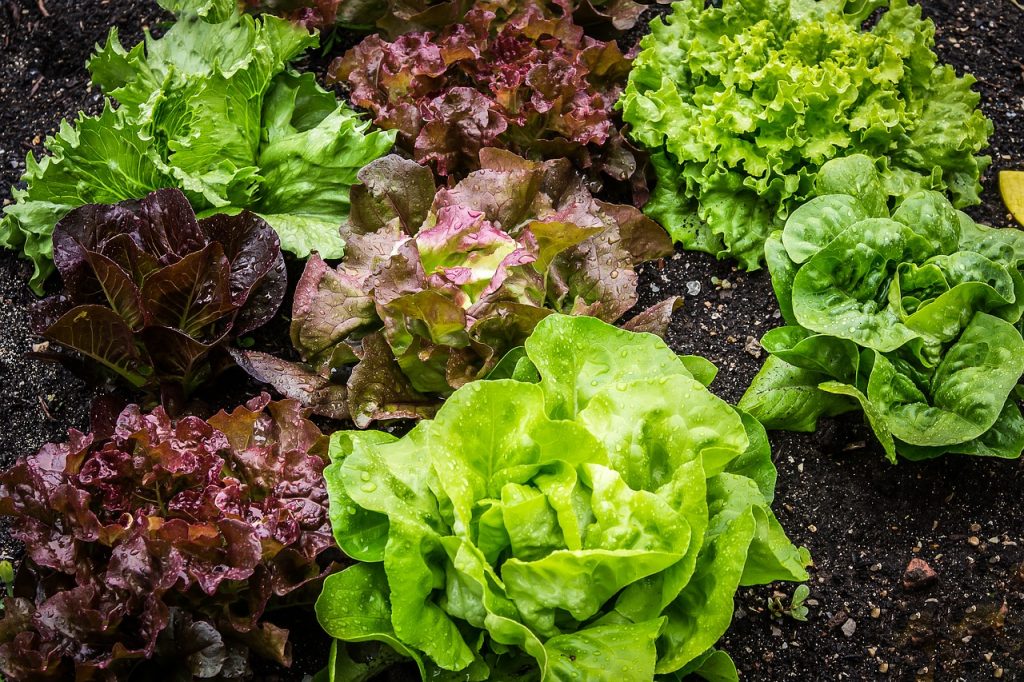
Survival temperature for lettuce is down to 28°F (-2°C).
Lettuce is a cool-season crop that can tolerate light frost and low temperatures.
For colder regions, plant more cold-tolerant lettuce varieties such as Buttercrunch and Winter Density.
Lettuce can be planted in late summer for a fall harvest. In mild climates, lettuce can be grown throughout the winter for lots of leafy salad leaves.
If you have planted cut-and-come-again lettuce (my favorite), you can go ahead and harvest lettuce when the leaves are a decent size for eating. Simply harvest a few of the lettuce outer leaves and allow the remaining plant to produce more leaves.
14. Mâche
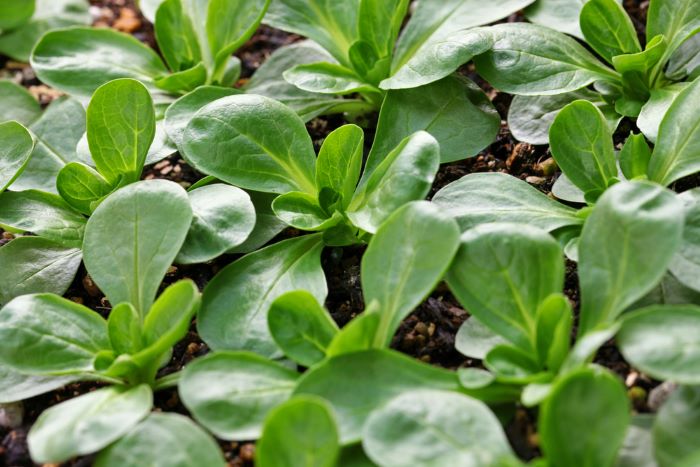
Survival temperature of mâche is down to 15°F (-9°C).
Mâche, also known as corn salad or lamb’s lettuce, is a cold-hardy leafy green and an excellent addition to winter gardens.
Plant mâche in late summer or early fall, ideally about 6-8 weeks before the first expected frost date.
You can sow the seeds directly in the garden or container, spacing them about 1 inch apart.
Mulch around the mâche plants to insulate the soil and protect the roots from extreme cold. You can also use row covers or cold frames to shield the plants from frost and wind.
You can harvest mâche 6-8 weeks after planting when the leaves are young and tender. Simply cut the leaves just above the soil level for delicious winter greens.
15. Mustard Greens
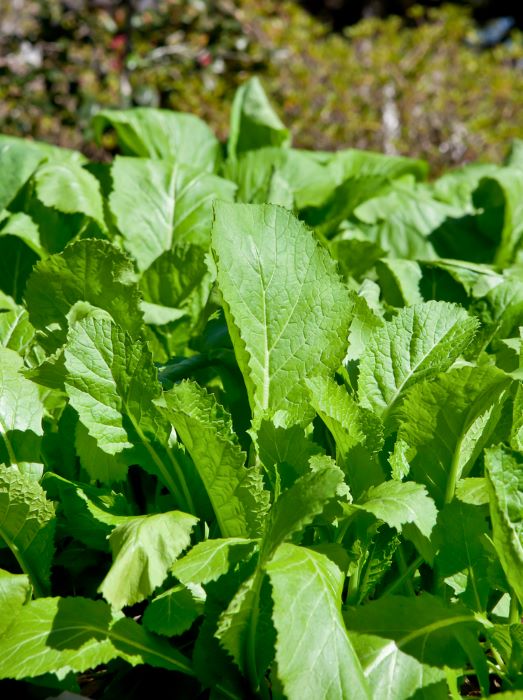
Survival temperature for mustard green is down to 15°F (-9°C).
Mustard greens are known for their cold hardiness and are often even sweeter after a light frost. For hard freezes, they will need some protection.
You can plant mustard greens in late summer for a fall crop.
You can start harvesting mustard greens when they are about 3-6 inches tall. Harvest the outer leaves first, allowing the inner leaves to continue growing and extend the harvest.
These peppery greens will give your winter meals a delicious hit of flavor in the colder months.
16. Onions
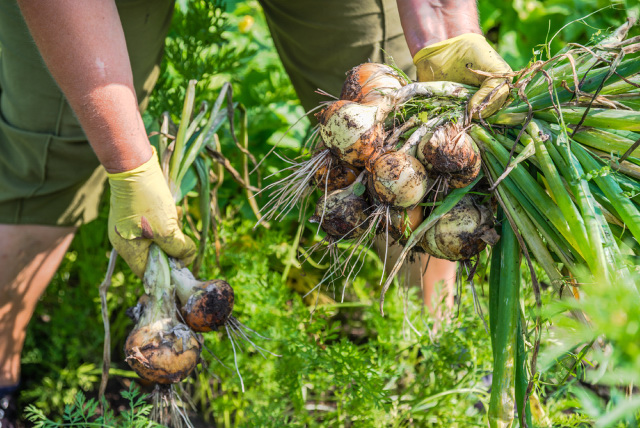
Survival temperature for onions is down to 20°F (-6°C).
Onions thrive in cooler temperatures and can be planted in the fall for overwintering.
To protect onions from freezing temperatures use mulch around them. Mulch will prevent the ground from freezing deeply around the onion bulbs.
If you are growing onions in extremely cold regions, use row covers to provide additional protection.
You will know onions are ready for harvest when the tops start to dry and even fall over.
For onions planted in the fall, you can expect to be harvesting them in the summer.
Once you have removed the onions from the garden, cure them by drying them in a well-ventilated place, and store them in a cool, dry location. With proper curing and storage, onions can last for many months.
Learn more about the growth stages of onions here.
17. Pak Choi
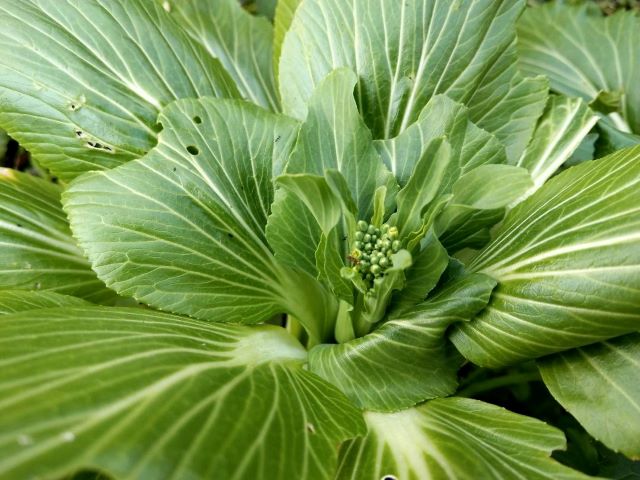
Survival temperature for Pak Choi is down to 20°F (-6°C).
Pak choi (also known as bok choy) is a cold-hardy vegetable that when planted in the fall will provide sweeter-tasting greens.
In cold climates, use row covers, or cold frames to protect pak choi from frost. And mulch around the plants for added protection against the cold.
Sow pak choi seeds directly in well-drained soil, spacing them about 6 inches apart. Pak choi can be succession planted every 2 weeks for a continuous supply.
You can start harvesting pak choi when it is around 6-8 inches tall which will take 45-60 days from planting. Pak choi can also be harvested as a smaller plant for a more tender leafy veg.
You can harvest the whole pak choi by cutting it off at the base of the plant just above ground level. If you leave the pak choi plant base with roots still in the ground, the pak choi will regrow.
Or you can harvest a few of the pak choi outer leaves at a time, leaving the rest of the plant to continue to grow. This is called cut-and-come-again harvesting and works very well with pak choi. Especially if you have multiple plants you can harvest from in order to take a decent harvest.
18. Parsnips
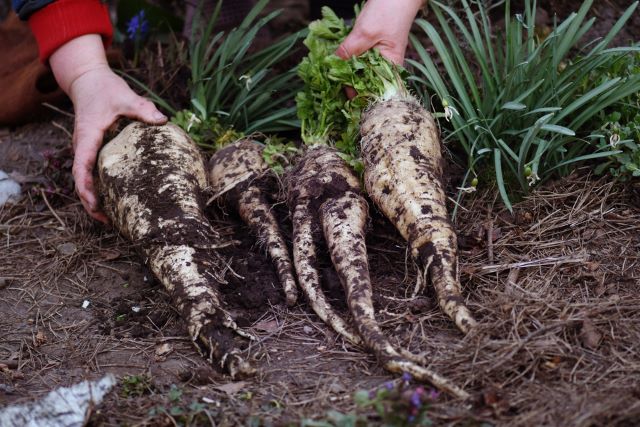
Survival temperature for parsnips is down to 20°F (-6°C).
Parsnips are cold-hardy root vegetables that can withstand frost and even improve in flavor after exposure to cold temperatures.
For a fall harvest, you can plant parsnips in last summer.
You can let parsnips grow through a few frosts but you should harvest them before the ground freezes. Or you can actually leave them in the ground and overwinter them by covering them with thick mulch. And then as soon as the ground thaws again you should harvest them.
Parsnips can reach their mature size of 12-18 inches (30-45 cm) long and 1-2 inches (2.5-5 cm) in diameter in 100-130 days after planting.
To harvest parsnips gently lift them from the ground using a garden fork or spade. Then enjoy the nutty goodness parsnips bring to the table!
19. Radishes
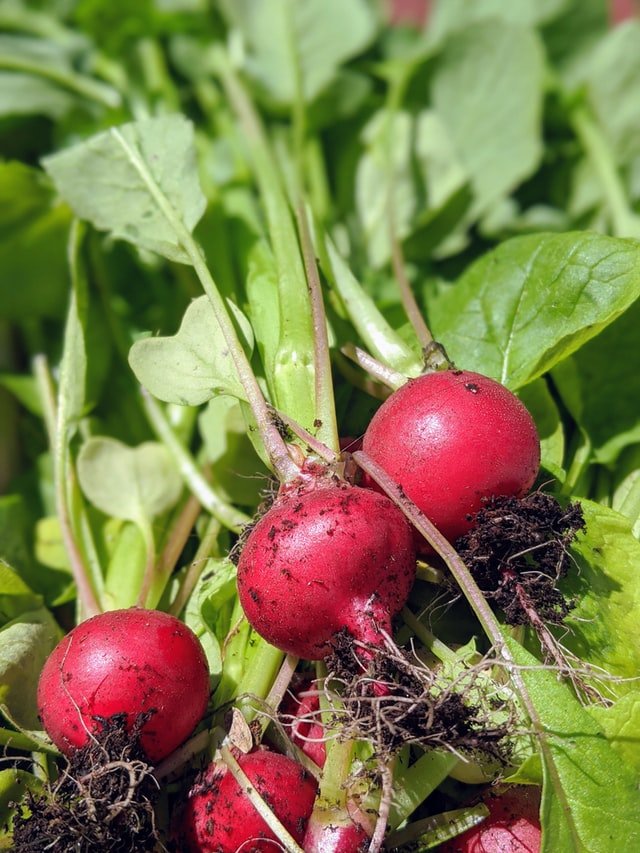
Survival temperature for radishes is down to 28°F (-2°C).
As a cool-season crop, radishes are known for their ability to thrive in cool weather. They can tolerate light frosts and cool temperatures and are very easy to plant in your garden.
Because radishes are so quick to grow at around 20-30 days, you can do multiple plantings for a longer harvest period. I like to sow a few new seeds every 2-3 weeks so I have plenty of radishes to harvest all throughout fall.
Sow radish seeds directly in the garden soil about 1/2 inch deep and spaced about 1 inch apart in rows 12 inches apart. Radishes prefer well-draining soil with good organic matter.
You can harvest radishes when you notice the roots are about 1 inch (2.5 cm) in diameter, depending on the variety you are growing. I prefer younger radishes because they are milder and more tender.
Don’t leave radishes in the ground for too long or they will lose their flavor and the texture can be tough.
20. Rutabagas
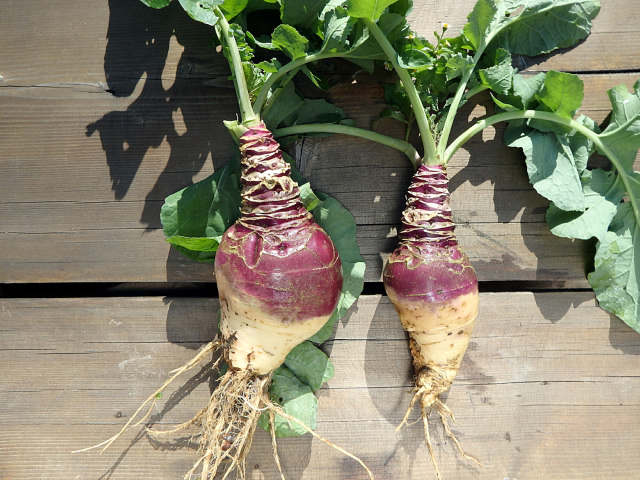
Survival temperature for rutabagas is down to 20°F (-6°C).
Rutabagas are a cold-hardy root vegetable you can plant in early summer for a fall harvest or in late summer for a winter harvest. The flavor of rutabagas is sweetest after a light frost.
To grow rutabagas, sow the rutabagas seeds directly in the garden in well-draining soil, spacing them about 2 inches apart.
Rutabagas are cold-tolerant but will benefit from mulching to protect the roots from freezing temperatures. In extremely cold climates row covers will protect the plants from frost.
Rutabagas need 90-100 days of growing time from the time of planting.
You can then begin to harvest rutabagas when they are 3-5 inches (7.5-12.5 cm) in diameter. Rutabagas can also be harvested when they’re smaller for a milder and tender flavor or slightly larger. Just don’t let them over-mature because the texture will become woody.
To harvest rutabagas, use a garden fork or spade to gently lift the roots from the ground.
21. Scallions
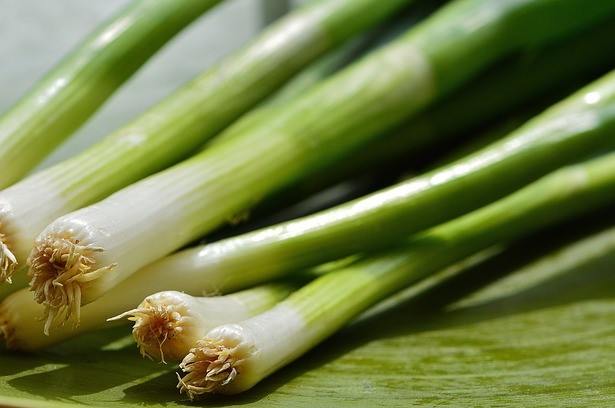
Survival temperature for scallions is down to 20°F (-6°C).
Scallions, also known as green onions, are remarkably cold-hardy and so handy to have ready to harvest during the winter months.
When it comes to planting scallions for the cool season, you can start them in the fall. To ensure a continuous harvest of scallions, you can stagger the planting by sowing seeds every two to three weeks.
Scallions are ready for harvest about two months after planting, although you can begin harvesting as soon as the green tops reach six inches (15 cm) in height.
You can either harvest scallions by gently pulling the plant from the ground, or you can cut the scallion just above the ground level and it will regrow. The entire scallion is edible, including the white bulb and the green leaves.
22. Snow Peas
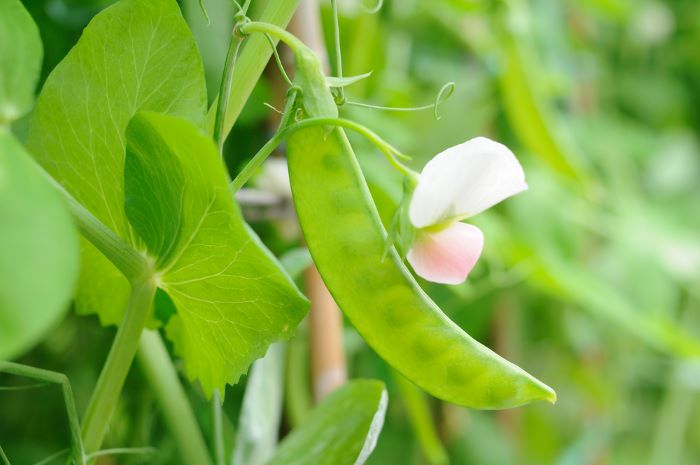
Survival temperature of snow peas is down to 10°F (-12°C)
Snow peas love the cold season and can tolerate frost.
For a fall harvest, you can plant snow peas in late summer, depending on your climate.
You will need to provide support for the snow pea vines as they grow, such as trellis or stakes.
Snow peas can be harvested 60-70 days after planting when the pods are plump but before the seeds inside mature fully.
My tip for the sweetest and most tender snow peas is to harvest them in the morning!
23. Sorrel
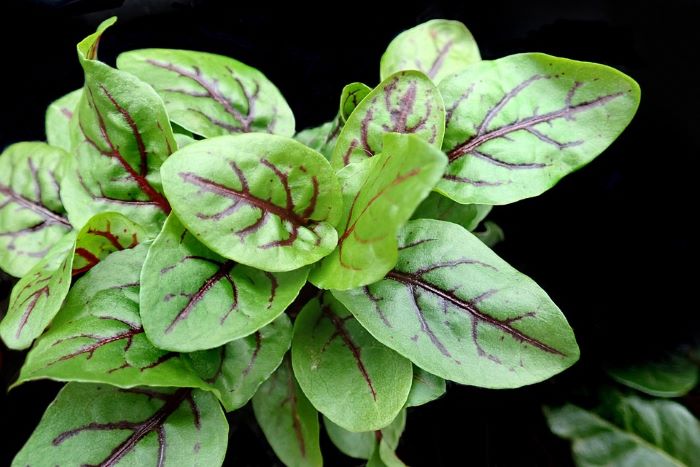
Survival temperature for sorrel is down to 10°F (-12°C).
Sorrel is a cold-hardy perennial herb that can tolerate temperatures as low as 10°F (-12°C) and some varieties even lower. As a perennial, sorrel can continue to grow year after year. So once you plant sorrel in your garden it can last several years.
Sorrel can be grown from seeds, transplants, or by plant division. It’s best to get sorrel in the ground before winter. You can do this in late summer or early fall to ensure you have winter-grown sorrel on hand for harvesting.
You can start harvesting sorrel leaves when they are 4-6 inches in length. Harvest the outer sorrel leaves, allowing the inner leaves to continue growing. Avoid harvesting more than one-third of the plant at a time to ensure continuous growth.
24. Spinach
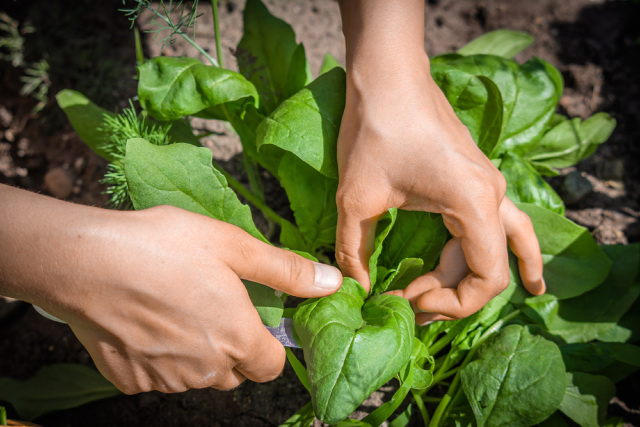
Survival temperature for spinach is down to 15°F (-9°C).
Spinach is a great choice for fall planting. This will allow enough time for the plant to establish itself before winter sets in.
You can start harvesting spinach in about 6-8 weeks after planting. For a continuous harvest, pick the outer leaves while allowing the inner leaves to continue growing.
I particularly love growing spinach because it’s so versatile in the kitchen! From soups to stir-fries, quiches, and curries, the addition of spinach helps increase my green leafy veg intake.
25. Swiss Chard
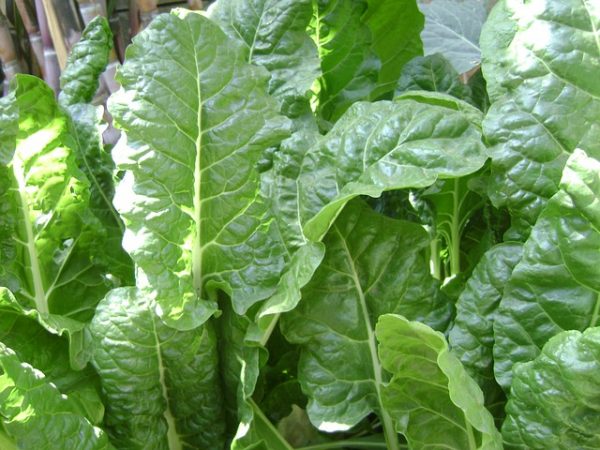
Survival temperature for Swiss chard is down to 15°F (-9°C).
Swiss chard a cold-hardy leafy green, can withstand frost and cold growing conditions so it’s a great option to grow in the winter vegetable garden.
You can directly sow Swiss chard seeds in the garden in late summer for a fall and winter harvest.
Then you can start harvesting Swiss chard when the leaves are of sufficient size, usually about 6-8 weeks after planting. Harvest Swiss chard outer leaves by cutting them near the base, allowing the inner leaves to continue growing for multiple harvests throughout the season.
In milder climates, Swiss chard can be grown throughout winter. While in colder regions, Swiss chard can be protected from harsh winter conditions and extreme frosts by mulching around the plants and using row covers.
26. Turnips
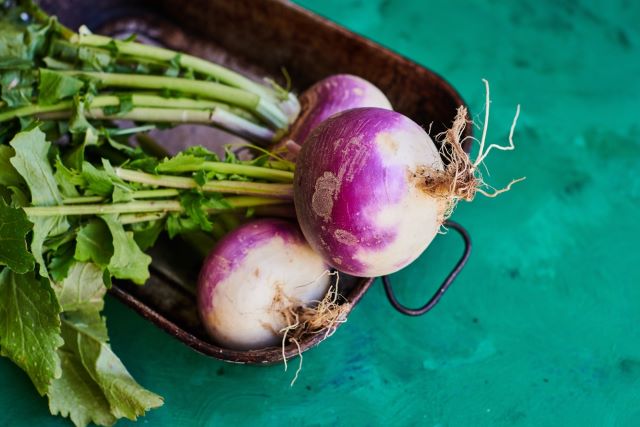
Survival temperature for turnips is down to 20°F (-6°C).
Turnips are cold-hardy and can tolerate frost and even light freezes. For hard freezes or extended periods of very cold weather, use row covers to protect them.
You can plant turnips in late summer or early fall for a fall harvest, and for those with mild winters, you can continue to harvest turnips throughout the winter months.
Turnips can be harvested in 40-60 days, depending on the variety.
While you are waiting for your turnips to reach a mature size (2-3 inches in diameter or 5-7.5 cm) you can harvest leafy green turnip tops from the outer edges and eat them. Keep in mind that leaf harvesting will slow the turnip root development so I would only harvest a few greens at a time. This will help ensure the plant has enough energy to grow the turnip root.
I really enjoy growing turnips in my veggie garden because they offer both roots and greens for harvest.
